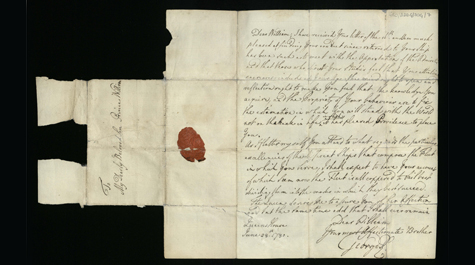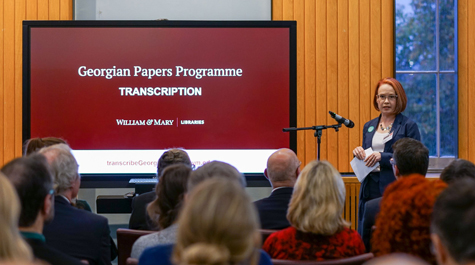'Hamilton' heightens interest in King George III
W&M marks five-year milestone for Georgian Papers Programme
Since its debut in 2015, the hit Broadway play “Hamilton” has increased interest in founding father Alexander Hamilton and his adversary, King George III.
Although the king is presented as a funny, foppish British monarch in the award-winning play, he is best known to the world as the “mad” king who lost the American Revolution. Over the years, there hasn’t been much evidence to challenge this depiction, until the launch of the Georgian Papers Programme (GPP), a 10-year project to make available online the historic manuscripts relating to the Georgian monarchy.
It is now five years since Britain’s Royal Archives began a project to transform public and scholarly access to its collections from the Georgian monarchy. By providing online access to these materials, scholars and historians around the globe are making new discoveries about the Georgian kings, and specifically about King George III.
The GPP is an international partnership between William & Mary, the Omohundro Institute of Early American History and Culture, the Royal Archives and King's College London. The partnership is working together to create an open, discoverable online archive of 425,000 pages.
While digitization is taking place at Windsor Castle, librarians and student assistants from William & Mary are working to transcribe materials in the digital lab at Swem Library.
“In addition to traditional transcription, we are using a handwritten text recognition tool, called Transkribus, that eliminates having to manually transcribe each of the documents,” said Debbie Cornell, head of digital services at W&M. “Although incredibly useful, it does have limitations, so traditional transcription is still necessary.”
Faced with nearly a half million pages of text to be transcribed, W&M Libraries is turning to the community for help. This month, W&M Libraries launched a crowd-sourcing transcription site, transcribegeorgianpapers.wm.edu, open to the public.
“We are appealing to the citizen historians in our community to help us with this project,” said Dean of University Libraries Carrie Cooper. “It’s a unique opportunity to contribute to our understanding of American and British history.”
The site will allow volunteers to directly contribute to the programme by transcribing and reviewing Georgian documents.
“Online transcription offers a unique way for the public to be involved with the project’s historical materials and contribute to the goals of the programme,” said Cornell.
The Georgian Papers include essays and personal letters written by King George, letters written by his Queen consort Charlotte, financial records, banquet menus, military documents and more. The most recent materials to be added to the transcription site are three George III medical collections, which include detailed records of the king’s health and daily letters written by his physicians to his son, the Prince Regent.
“The project is changing the way we view King George III, the same way ‘Hamilton’ is presenting a different version of the king,” said Cornell. “It’s opening up new knowledge about the Georgian period.”
















